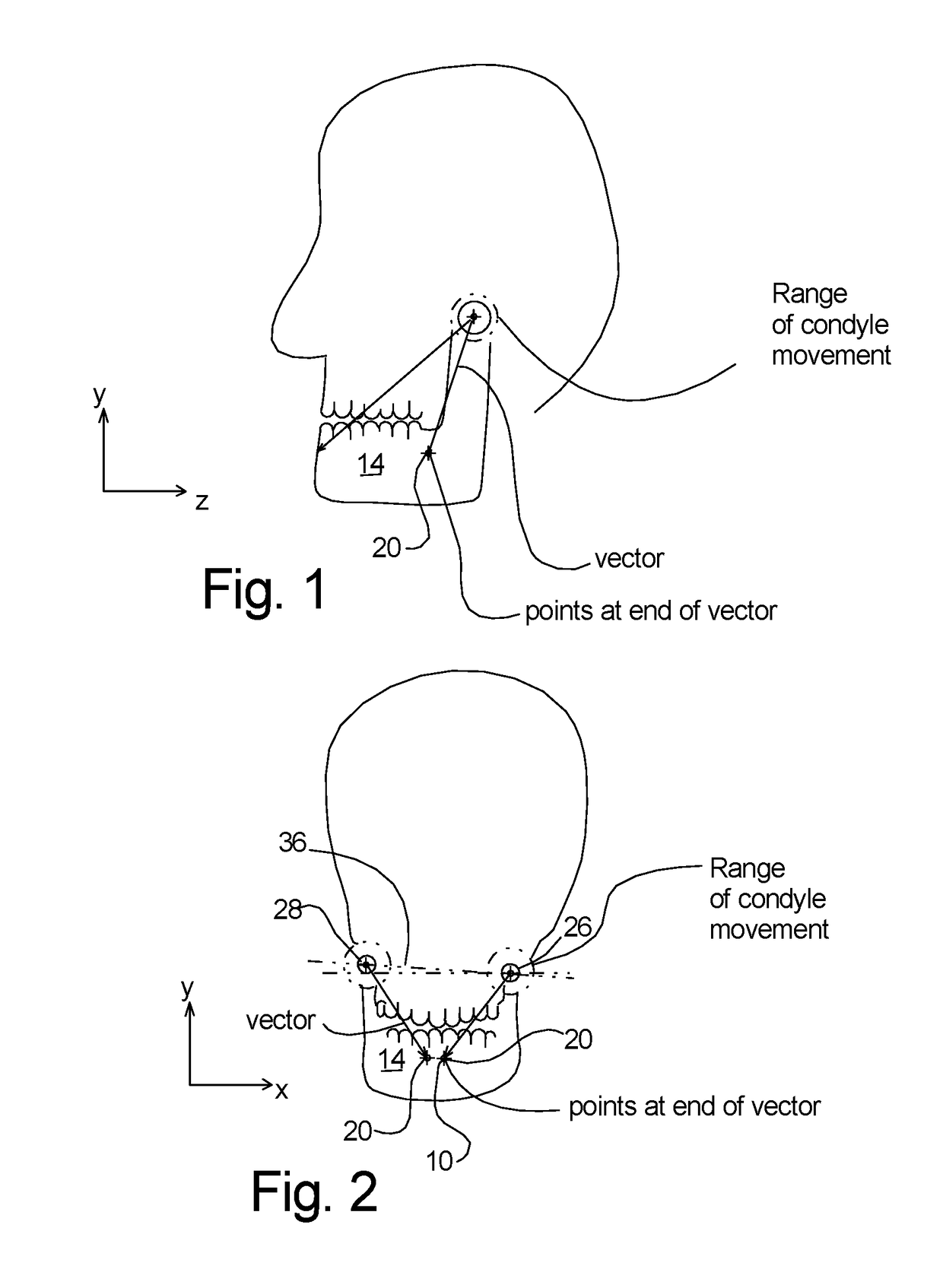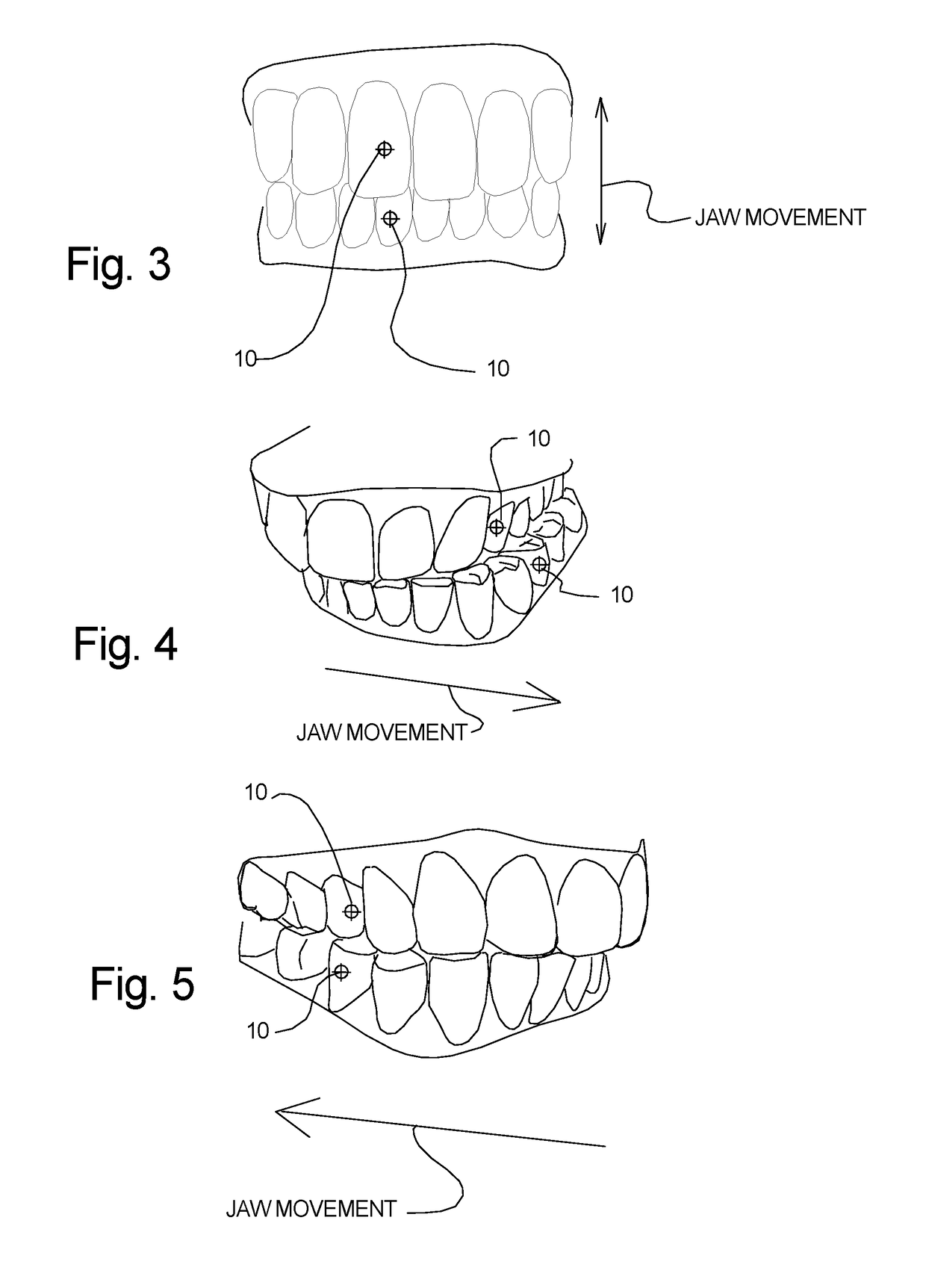Virtual Dental Articulator And System
a virtual and dental articulator technology, applied in dental articulators, medical science, impression caps, etc., can solve the problems of limited jordan et al. system, complex jaw movement, and difficulty in not only recording a comprehensive range of mandibular movement, so as to minimize the need for mechanical articulators
- Summary
- Abstract
- Description
- Claims
- Application Information
AI Technical Summary
Benefits of technology
Problems solved by technology
Method used
Image
Examples
Embodiment Construction
[0027]While the invention will be described and disclosed here in connection with certain preferred embodiments, the description is not intended to limit the invention to the specific embodiments shown and described here, but rather the invention is intended to cover all alternative embodiments and modifications that fall within the spirit and scope of the invention as defined by the claims included herein as well as any equivalents of the disclosed and claimed invention.
[0028]Turning now to FIG. 1 where a flow diagram of steps of the method disclosed here have been illustrated. The process begins with creating a three-dimensional digital mapping image or scan of the patient's teeth. As discussed above, it is contemplated that these three-dimensional mapping images may be created with a commercially-available dental scanner, such as the iTero Element®, and then selecting and placing or attaching at least one reference point marker 10 on a tooth 12 or on the patient's mandible 14. Th...
PUM
 Login to View More
Login to View More Abstract
Description
Claims
Application Information
 Login to View More
Login to View More - R&D
- Intellectual Property
- Life Sciences
- Materials
- Tech Scout
- Unparalleled Data Quality
- Higher Quality Content
- 60% Fewer Hallucinations
Browse by: Latest US Patents, China's latest patents, Technical Efficacy Thesaurus, Application Domain, Technology Topic, Popular Technical Reports.
© 2025 PatSnap. All rights reserved.Legal|Privacy policy|Modern Slavery Act Transparency Statement|Sitemap|About US| Contact US: help@patsnap.com



